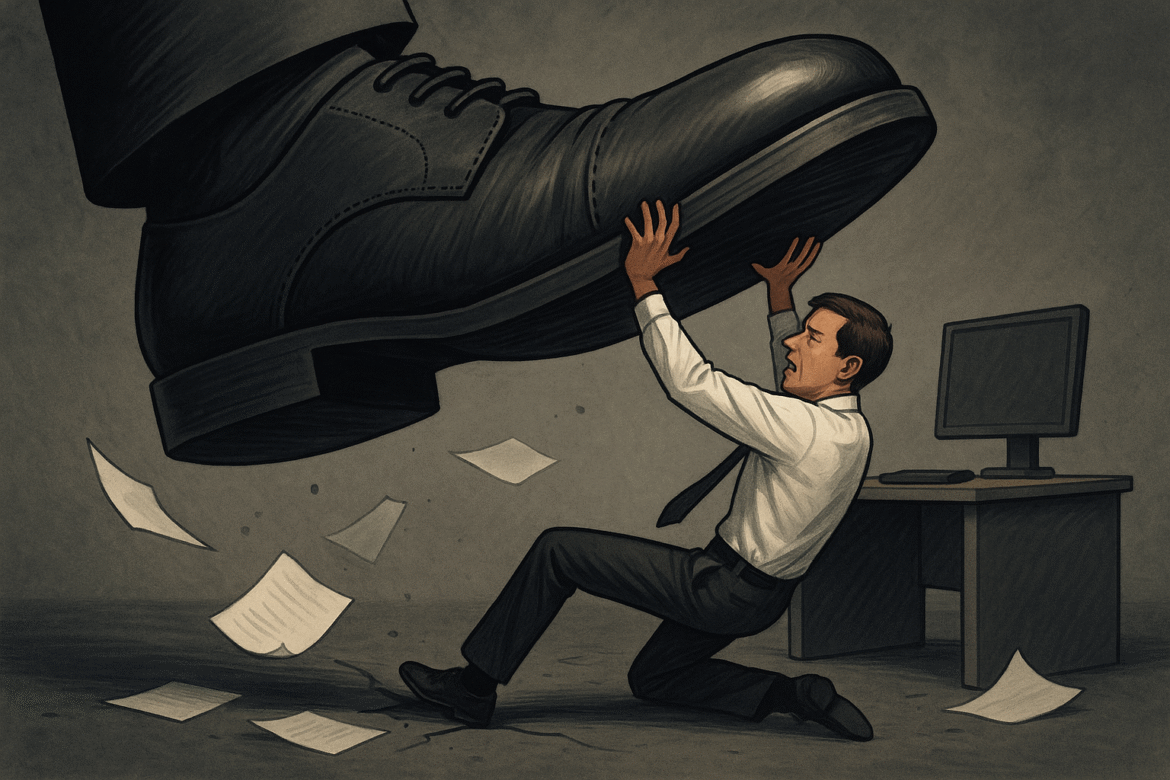How confident are you that your workplace has controls to prevent workplace bullying?
Employers and HR professionals are reminded of the importance of moving efforts to prevent bullying and harassment beyond policies to a systems approach that promotes awareness, desire, knowledge, skills, practice, and monitoring — and drives accountability and learning on what “good” looks like regarding safe and respectful workplace behaviours.
In 2022, the Government of Canada reported a 26 per cent increase in workplace harassment and violence incidents compared to the previous year. Global News reported in 2024 that Canadian employees aged 25 to 34 had the highest rate of workplace harassment or sexual abuse, with 60 per cent of women and 39 per cent of men in this age group experiencing such incidents.
While bullying can start as psychological rather than physical incidents, its effects can be damaging and result in victims living in fear and terror. It can have a lasting, negative psychological impact that can lead to mental injury if not addressed. Its effects include:
· Emotional exhaustion and chronic stress
· Anxiety and depression stemming from prolonged mistreatment
· Decreased self-esteem and confidence in professional abilities
· Burnout and disengagement leading to increased turnover
· Physical symptoms, including headaches, fatigue, and digestive issues
· Trauma and mental injury (i.e., post-traumatic stress injury)
Bullying’s impact on employees isn’t just personal — it directly affects organizational performance. Productivity, morale, and teamwork deteriorate when bullying is ignored or dismissed.
When unchecked, bullying can escalate into workplace violence, crossing the line from psychological harm to physical aggression (i.e., threats of bodily harm, pushing, and grabbing to intimidate). Leaders and HR professionals play a crucial role in recognizing, addressing, and preventing workplace bullying before it becomes a pervasive threat.
Exploring workplace bullying
Workplace bullying is repeated, unreasonable actions directed toward one or more employees, creating a hostile, intimidating, or threatening workplace experience. Bullying is a form of harassment, with the two terms often used interchangeably.
Different from workplace conflicts, bullying is persistent and deliberate, often aimed at controlling, silencing, or harming the target. Bullying can be psychological, verbal, or physical—on a spectrum ranging from subtle behaviours (covert bullying) to outright aggression (overt bullying).
Workplace bullying is not simply an issue of difficult personalities or workplace tensions. It is a psychosocial hazard that affects employees’ mental health, engagement, productivity, and organizational culture. Unlike isolated disagreements or occasional conflicts, workplace bullying is a persistent pattern of mistreatment, eroding psychological safety and the victims’ well-being.
Bullying can take many forms, from subtle, insidious behaviours to openly aggressive conduct. Leaders and HR professionals must be attuned to covert and overt bullying. Some examples:
Covert bullying (hidden, indirect)
· Exclusion or social isolation
· Sabotaging work performance by withholding information
· Passive-aggressive remarks or sarcasm disguised as jokes
· Spreading rumours or malicious gossip
· Undermining a colleague’s credibility
Overt bullying (direct, visible)
· Verbal abuse, shouting, or humiliation
· Threats or intimidation
· Excessive micromanagement to exert control
· Public criticism meant to degrade rather than correct
· Intentional disruptions that prevent an employee from succeeding
Both forms can create a toxic work environment, eroding an organization’s morale, productivity, and trust. Bullying ranges from sporadic incidents to deeply entrenched patterns of abuse:
· Random bullying — Occurs intermittently, perhaps weekly or monthly, and may seem unpredictable
· Predatory bullying — Targeted and persistent, happening daily or frequently with clear intent to control, intimidate, or harm an individual
Regardless of frequency, workplace bullying is a deliberate form of harassment designed to manipulate others’ experiences, silence dissent, or establish dominance over colleagues.
Who is the number one bully in most workplaces?
Unfortunately, it is leaders — the very people who have a duty to protect employees from harm under OHS legislation. High-performance cultures that reward output with little to no regard for the employee experience are cultures where leaders may be more likely to engage in aggressive behaviour. Leaders have a right to manage under OHS legislation, but this does not give them the right to be rude, intimidate, or make threats to their direct reports.
The Canada Safety Council estimates that 72 per cent of workplace bullying cases involve people in positions of authority, such as managers and supervisors. A critical part of safe and respectful controls must be supporting leaders to become psychologically safe leaders to ensure they understand how to balance employer pressures, their performance, and employees’ needs to mitigate the risk of aggressive behaviour that can result in bullying.
Leaders must understand they have the task of navigating how and what happens in the workplace. Their daily interactions, comments, and attitudes must be professional—without threats and hostility.
When workplace bullying becomes violence
While workplace bullying often begins as psychological harm, when there are no controls for early intervention, this type of aggression can escalate to physical violence if not stopped.
I have seen a case where a victim finally had enough and tried to stand up for themselves. That sparked an emotional response in the bully, who punched the victim in the face several times.
When investigating, it became evident that the bully lost control. The trigger was the threat of losing power and control, which resulted in their emotional and physical escalation. This led to the bully being terminated and criminally charged.
The tragic reality is many employees, including some leaders, knew about the bullying that was going on for a couple of years. It was ignored because it appeared no one wanted this large person to turn on them. They were physically imposing and had a reputation in the community as being dangerous, and there were rumours they were associated with a gang.
Employers have a duty to protect and ensure they have people in positions of authority who are not intimidated by confronting bullies quickly and professionally.
The transition from emotional manipulation to physical intimidation increases the risk of harm:
· Threatening gestures or proximity designed to intimidate
· Physical aggression, such as pushing, grabbing, or throwing objects
· Vandalizing or destroying a colleague’s workspace or personal belongings
· Stalking or excessive monitoring outside of workplace duties
Leaders and HR professionals’ legal and ethical responsibility is to recognize early warning signs and implement zero-tolerance policies for bullying and workplace violence.
Prevention and intervention
CEOs, senior leadership, leaders, and HR professionals hold the power and responsibility to prevent workplace bullying before it spirals into lasting damage:
Develop and implement clear policies that speak to bullying, all forms of harassment, and workplace violence. Define the types and behaviours of bullying, employees’ rights and expectations of upstanding behaviour, and ensure a psychologically safe, responsive, and actionable reporting system.
Encourage psychological safety — Foster open communication where employees feel safe to report concerns. Implement controls (i.e., pulse checks, focus groups) that monitor employees’ experience of bullying, incivility, harassment, and workplace violence. Be vigilant and adopt a Plan-Do-Check-Act approach to ensure that policy expectations of desired behaviours happen.
Train all leaders to be psychologically safe leaders — Do not assume leaders are clear on what it means or have the skills to be psychologically safe leaders.
Address issues promptly — Early intervention prevents escalation. Ignored behaviour reinforces a toxic culture.
Implement safe and respectful training — Help employees and managers recognize and stop enabling harmful behaviours.
Support victims — Offer mental health resources, mediation, and confidential reporting mechanisms. Audit to ensure mental health resources are effective. Do not assume that an EFAP program is enough. Ensure it does what it needs to and has resources to support employees in crisis.
Bullying is more than unpleasant workplace behaviour. It is a dangerous psychosocial hazard that can lead to workplace violence if ignored. By actively confronting workplace bullying, leaders and HR professionals can transform a workplace culture into one that promotes respect, accountability, and psychological well-being.
Addressing bullying early, clearly, and consistently must be an organizational priority that defines leadership effectiveness. Confronting bullying isn’t about blame — it’s about accountability to ensure respect, fairness, and psychological safety are the standard, not the exception.






